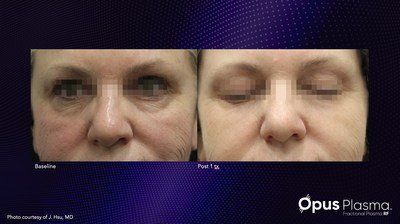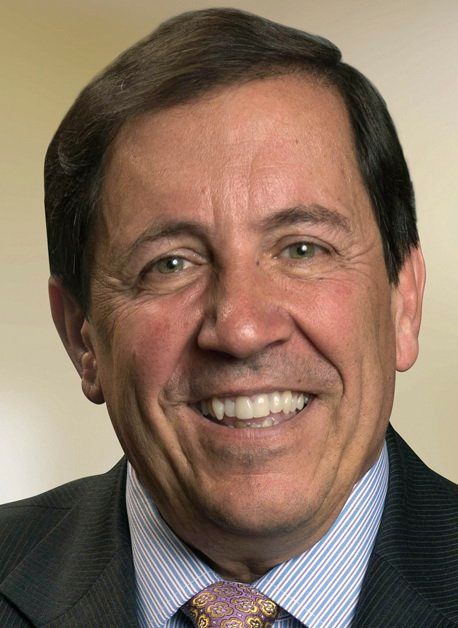- Acne
- Actinic Keratosis
- Aesthetics
- Alopecia
- Atopic Dermatitis
- Buy-and-Bill
- COVID-19
- Case-Based Roundtable
- Chronic Hand Eczema
- Chronic Spontaneous Urticaria
- Drug Watch
- Eczema
- General Dermatology
- Hidradenitis Suppurativa
- Melasma
- NP and PA
- Pediatric Dermatology
- Pigmentary Disorders
- Practice Management
- Precision Medicine and Biologics
- Prurigo Nodularis
- Psoriasis
- Psoriatic Arthritis
- Rare Disease
- Rosacea
- Skin Cancer
- Vitiligo
- Wound Care
Article
Opus Plasma offers microplasma RF technology
Author(s):
In the evolution of skin resurfacing technology, from full-field CO2 to fractional and now fractional plasma, Alma believes theirs is a novel innovation offering versatile skin solutions.

Dr. Richard Gentile

Alma, Inc., announced in a press release this week their Opus™ platform featuring Opus Plasma™, the company's proprietary high-frequency unipolar radiofrequency (RF) technology.
According to the manufacturer, Opus Plasma is the first fractional plasma technology to enter the market. Not to be confused with strictly plasma devices, the combination of RF with “microplasma” energy allows physicians to treat skin texture and quality concerns in less time and with less patient downtime compared with other skin resurfacing solutions, the company says.
The Opus operates at a high frequency (over 40 MHz), which charges the metal pins on its tips to a high RF voltage. When close to the skin, it reacts with atmospheric pressure in the air thereby creating plasma-like energy.
“Plasmas used for the cutting, coagulation, and ablation of soft tissue are a relatively new addition to the armamentarium of energy-based surgical devices,” says Richard Gentile, M.D., a facial plastic surgeon in Boardman, Ohio. “There are many different ways in which plasmas can be produced and these differences can result in very different tissue effects and therapeutic outcomes. Technically, a plasma is produced any time a spark is generated between an electrode carrying RF energy and human tissue such as has been seen for decades while using monopolar electrosurgical accessories.”
According to the release, the intensity of the Opus Plasma can be adjusted to a light, moderate or aggressive setting, making it a versatile resurfacing option.
"Fractional plasma will change how we think about resurfacing,” said Jeffrey Hsu, M.D., FAAD, a board-certified dermatologist at Oak Dermatology in the Greater Chicago Area, in the release. “If full-field CO2 technology was resurfacing 1.0, and fractional technology was resurfacing 2.0, fractional plasma technology is resurfacing 3.0. I can produce results to match the most aggressive CO2 laser or the gentlest laser peel in a fraction of the procedure time and much less patient downtime. The results we're seeing with Opus Plasma are quite impressive, even after just one treatment."
By comparison, a strictly plasma device such as Renuvion (Apyx Medical; Clearwater, Fla.), which uses helium, has a lower energy current, allowing for deeper tissue penetration while helping to minimize risk of over treatment.
“Because the current is so low [with Renuvion], it is dispersed before it is able to penetrate deep into the tissue,” says Dr. Gentile. “This allows for soft tissue heating with minimal depth of thermal effect. This is the opposite of the current-based devices where current is high and ‘plasma’ is low. Many current devices marketed as plasma devices are probably better classified as unipolar or bipolar RF devices as there is no ionization of noble gases,” he says.
In terms of the evolution of laser skin resurfacing technology from full-field CO2 to fractional and now fractional plasma, Alma believes theirs is a novel innovation for offering various skin resurfacing solutions.
"The release of Opus with Opus Plasma meets our commitment to position our proprietary innovations at the forefront," Avi Farbstein, CEO of Alma, North America, said in the release. "Thanks to our team overseas, the clinical benefits of Microplasma RF have been thoughtfully studied for years. We believe the market is ready and the timing is right to take this novel innovation mainstream as a mainstay skin resurfacing solution for our customers."
Newsletter
Like what you’re reading? Subscribe to Dermatology Times for weekly updates on therapies, innovations, and real-world practice tips.














